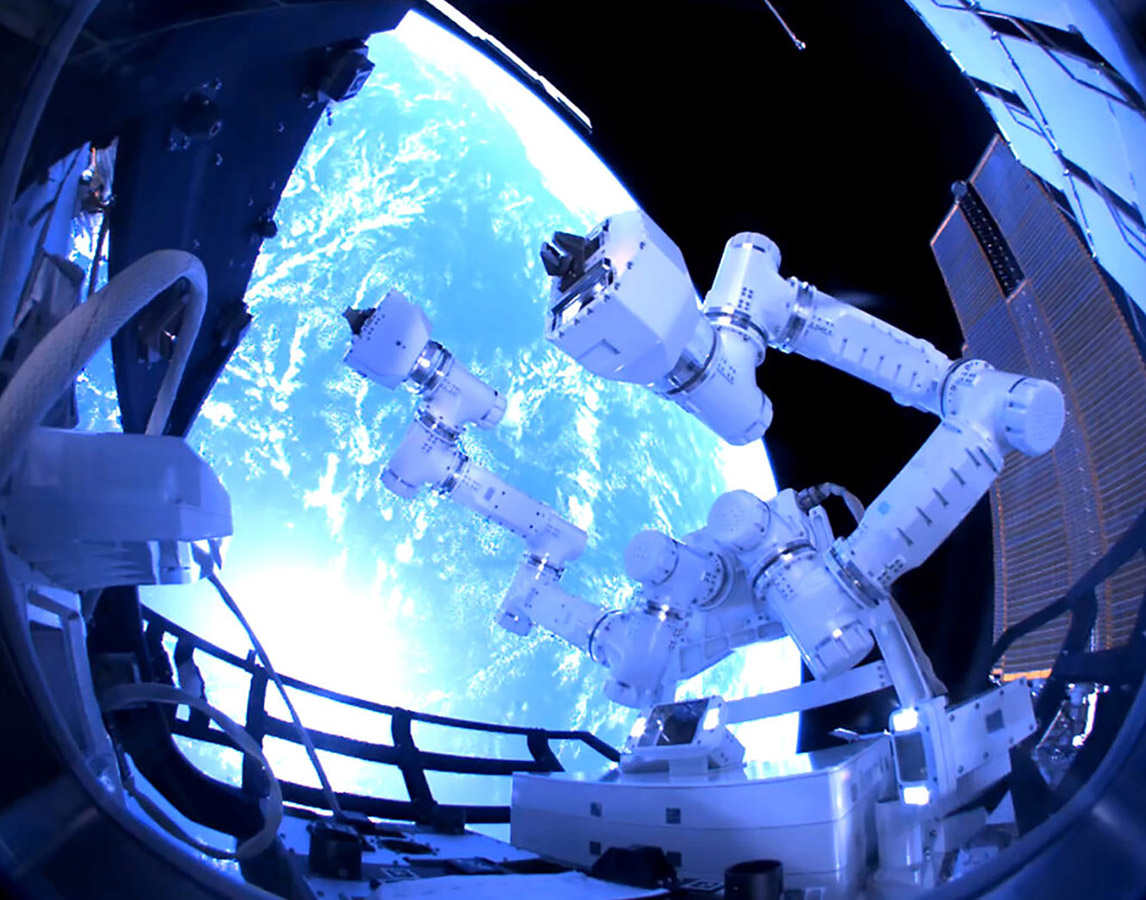Stay Up to Date
Submit your email address to receive the latest industry and Aerospace America news.
The Space Automation and Robotics Technical Committee works to advance the development of automation and robotics technologies and their applications to space programs.
It was a rollercoaster of a year for robotics, with major investments and achievements, along with some unexpected events.
With a plethora of lunar landers in development, rovers for exploration are a major focus. At NASA’s Jet Propulsion Laboratory, the Cooperative Autonomous Distributed Robotic Exploration project in January completed construction and testing of its rovers. Also that month, Lunar Outpost of Colorado announced plans to land a third rover on the lunar surface, aboard an Intuitive Machines lander. In July, NASA announced the cancellation of VIPER, the Volatiles Inspecting Polar Exploration Rover mission, but as of November was assessing proposals from industry to take over VIPER and its lunar ice-scouting mission.
There were also developments in robotics for human exploration. In May, MIT presented a paper at the International Conference on Robotics and Automation on its SuperLimbs concept for wearable robotic limbs. And in April, NASA selected three companies to continue refining concepts for a highly autonomous Lunar Terrain Vehicle for crewed lunar landings under the Artemis program.
In-space servicing, assembly and manufacturing, or ISAM, efforts continued to grow. Some 300 people attended the Consortium for Space Mobility and ISAM Capabilities Convergence Conference in May. There, COSMIC announced its first student competition, the COSMIC Capstone Challenge, which will run through April 2025. In March, GITAI of California robotically constructed a 5-meter-tall communications tower in a ground demonstration that replicated the lunar environment. A few weeks later, GITAI completed an assembly demonstration with its dual robotic arm outside the International Space Station, achieving technical readiness level 7 for its technology.
In September, NASA confirmed its decision to cancel OSAM-1, the planned On-Orbit Servicing, Assembly, and Manufacturing 1 satellite servicing and refueling mission. After the cancellation was initially announced in February, Congress directed NASA to create contingency plans for carrying out a descoped version of the mission. Last year, NASA concluded a similar mission, OSAM-2, also without a flight demonstration. In September, NASA announced that it would provide lessons from OSAM-1 to DARPA to assist with that agency’s Robotic Servicing of Geosynchronous Satellites program, which aims to demonstrate inspection, relocation, upgrade installation and anomaly correction of GEO satellites.
In January, NASA’s Precision Assembled Space Structure program completed ground demonstrations of large-scale, neural-network-assisted truss assembly, working toward a planned ground demonstration to assemble a 20-meter diameter telescope.
Interest in space robotics from all sectors continued to grow. In January, the U.S. Space Force and Air Force Research Laboratory announced it would award contracts to the University of Cincinnati and Texas A&M University under the Space Strategic Technology Institute 2 initiative. In August, NASA announced its Early Career Initiatives awards, with two projects focused on in-space robotics: the Modular Assembled Radiators for Nuclear Electric Propulsion Vehicle and Lunar Assembly and Service by Autonomous Robotics.
In the area of robotic subsystems and capabilities, the first space-hardened artificial intelligence-focused graphics processing unit was launched in August in a computer built by Aethero of North Dakota. Aethero, with Cosmic Shielding Corp. of Georgia, demonstrated on-orbit GPU processing capabilities.
Space-based computer vision had a surge of activity, with the May opening of the Center for Aerospace Autonomy Research at Stanford University, in partnership with Blue Origin and Redwire), and the founding of startups including Space-ng of California.
In proving itself as the new frontier for space exploration and operations, space robotics will continue to grow in importance, relevance and market.
Contributors: Cesare Guariniello and Kimberly Wilcher
Stay Up to Date
Submit your email address to receive the latest industry and Aerospace America news.




